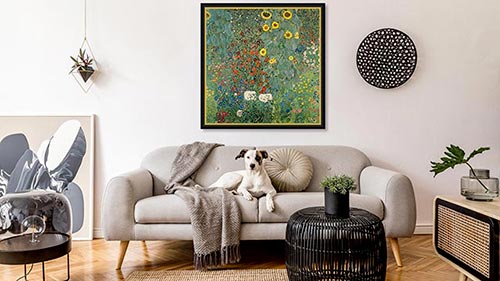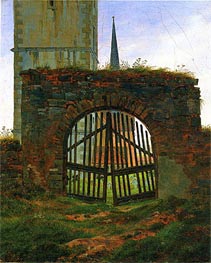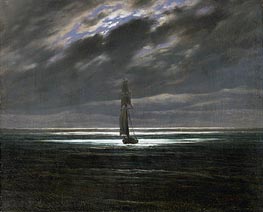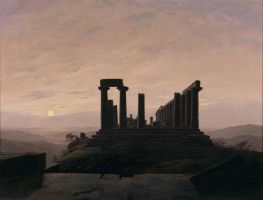Monastery Ruins Eldena, c.1824/25 by Caspar David Friedrich
Canvas Print - 11581-FCD
Location: Gemaldegalerie, Berlin, GermanyOriginal Size: 35 x 49 cm
Giclée Canvas Print | $54.56 USD
Your Selection
Customize Your Print
By using the red up or down arrows, you have the option to proportionally increase or decrease the printed area in inches as per your preference.
*Max printing size: 17.2 x 24 in
*Max framing size: Long side up to 28"
"Monastery Ruins Eldena" will be custom-printed for your order using the latest giclée printing technology. This technique ensures that the Canvas Print captures an exceptional level of detail, showcasing vibrant and vivid colors with remarkable clarity.
Our use of the finest quality, fine-textured canvas lends art reproductions a painting-like appearance. Combined with a satin-gloss coating, it delivers exceptional print outcomes, showcasing vivid colors, intricate details, deep blacks, and impeccable contrasts. The canvas structure is also highly compatible with canvas stretching frames, further enhancing its versatility.
To ensure proper stretching of the artwork on the stretcher-bar, we add additional blank borders around the printed area on all sides.
Our printing process utilizes cutting-edge technology and employs the Giclée printmaking method, ensuring exceptional quality. The colors undergo independent verification, guaranteeing a lifespan of over 100 years.
Please note that there are postal restrictions limiting the size of framed prints to a maximum of 28 inches along the longest side of the painting. If you desire a larger art print, we recommend utilizing the services of your local framing studio.
*It is important to mention that the framing option is unavailable for certain paintings, such as those with oval or round shapes.
If you select a frameless art print of "Monastery Ruins Eldena" by Caspar David Friedrich, it will be prepared for shipment within 48 hours. However, if you prefer a framed artwork, the printing and framing process will typically require approximately 7-8 days before it is ready to be shipped.
We provide complimentary delivery for up to two unframed (rolled-up) art prints in a single order. Our standard delivery is free and typically takes 10-14 working days to arrive.
For faster shipping, we also offer express DHL shipping, which usually takes 2-4 working days. The cost of express shipping is determined by the weight and volume of the shipment, as well as the delivery destination.
Once you have added the paintings to your shopping cart, you can use the "Shipping estimates" tool to obtain information about available transport services and their respective prices.
All unframed art prints are delivered rolled up in secure postal tubes, ensuring their protection during transportation. Framed art prints, on the other hand, are shipped in cardboard packaging with additional corner protectors for added safety.
Painting Information
"Monastery Ruins Eldena" by Caspar David Friedrich, crafted around 1824-1825, is a vivid testament to the Romantic fascination with the sublime, the melancholic, and the transient nature of human endeavors. The painting beckons us into a world where nature reclaims its dominion over man's ephemeral constructs. The ruins of the Eldena Monastery stand as a poignant symbol of decay and the inevitable passage of time. These ancient walls, once resplendent with religious significance, now lie in a state of majestic desolation.
Friedrich's meticulous attention to detail is evident in the way he renders the texture of the crumbling stone, the intricate play of light and shadow, and the encroaching vegetation that intertwines with the remnants of the monastery. The natural overgrowth, with its verdant hues, almost seems to cradle the ruins, suggesting a harmonious, albeit melancholic, coexistence between nature and the remnants of human aspiration.
What is particularly striking in this work is Friedrich’s use of light. The delicate, almost ethereal sunlight filtering through the remnants of the once-grand arches illuminates the scene with a soft, golden glow. This light not only enhances the tactile quality of the ruins but also imbues the scene with a spiritual aura, as if the divine still lingers among the decaying stones.
In the foreground, a modest cottage, dwarfed by the towering ruins, speaks of human resilience and continuity. It serves as a counterpoint to the grandiosity of the ruins, a humble reminder of life's persistence amidst decay. This juxtaposition of the enduring and the ephemeral, the grand and the humble, is quintessentially Friedrich, capturing the Romantic spirit in its purest form.





















